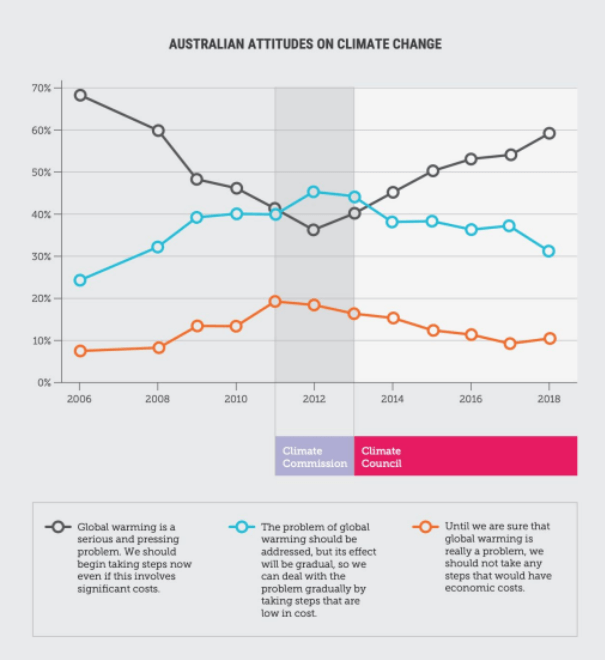There’s a change in the way we communicate about climate change, and it’s all to do with the “fear factor”.
GoodChat have been making videos with The Climate Council since its inception (starting with this first video during their mad launch scramble). For many years, we focused on positive messages. Rather than scare people with the consequences of climate change – which had been proven to turn people off – we focused on inspiring stories of everyday people taking action. We wanted our audience to think “we can beat this thing.”
We came up with stories like Broken Hill.
Here we focused on unlikely characters forging their own path to a renewable future. They were not your typical environmentalist but rather ex-miners, farmers and drag queens who spoke about the importance of renewables eloquently and persuasively.
The video series did well – 3 million organic views, 50,000 shares.
So we did another video just like it. Again, unlikely heroes evangelising about renewables. This time it was in Kidston, a ghost town left behind by mining.
And again, the audience loved it. 300k organic views and 7k shares
Our approach was working.
The Climate Council have achieved a 20% shift in public sentiment on climate action across a six-year period. A lot of that had to do with the 38,000 media items they’ve generated. But it also had a lot to do with their social media presence which now reaches 3.4 million people per month with their message. And much of that presence was built with video.

It’s changing
Recently, things have changed. The latest IPCC report has moved on from “we should act quite soon” to “act now or we’re in trouble”.
As Amanda McKenzie from the Climate Council says “Australians are reckoning with a terrifying truth: that the impacts of climate change are here now. Many of us are frightened. A lot of us are angry. People are heartbroken and anxious about what to do next.”
So, our messaging has to change too. It’s now more urgent. More direct.
Check out our latest video from The Climate Council, Save Our Summer.
It still has a positive message, but it’s now more about the dangers of climate change – how it could affect our summer.
This is not to say we can’t have a positive message. In fact, it’s super important and the majority of what we do. As we say with the Climate Council, let’ go 70% positive, 30% negative.
But if you’re communicating about Climate Change, don’t be afraid to go a little dark. We’re ready for it

